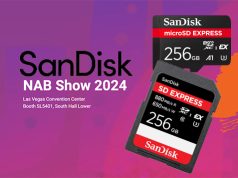You know that a tech trend is gaining steam when the populous goes from tentatively trying to figure out what it is to excitedly trying to figure out how to make it work in their lives. This is precisely where we sit with regard to cloud storage as we head into 2012. From what we’re hearing, it’s no longer “if” the technology will gain mainstream attention, it’s when and in what form.
According to data storage specialist Drobo (drobo.org), as part of their recently released storage industry predictions for 2012, they claim pure cloud storage is probably not in the cards for U.S. folks with regard to their immediate needs but a hybrid solution is more likely. The report added this storage combo meal will tightly integrate public and private cloud architectures with on-premises storage systems, a trend Drobo said will hold true for home users and small to medium-size businesses.
Drobo claims 96% of SMBs (up to 500 employees) will store at least 50% of their data on-site for a minimum of the next three years. Factors cited included cloud performance, security and reliability concerns. Both businesses and consumers state they want more automated integration between their on-site data and their cloud provider, and that is getting attention from providers as well.
“The pace of change in the storage industry is going to accelerate in 2012,” said Tom Buiocchi, CEO of Drobo. “Cloud strategies are evolving rapidly, solid-state media will have its day, and Big Data technologies will find their way to ‘Small Data’ customers. Any vendor with an old school product line is going to learn some new lessons the hard way in 2012.”
Consumer storage needs are changing rapidly, and more people are looking into solutions that rise above the fears inherent in their current setup—notably, obsolescence.
“The mountains of digital data we’re collecting is beginning to literally consume people,” explained Seth Green, a New Jersey-based consumer research analyst. “2012 will surely be the year that the idea of truly looking at storage solutions that solve this problem takes on a much larger role in our lives. The cloud will undoubtedly become a major part of that conversation.”
Among the trends you’ll spot at CES in the digital storage area are cloud-centric technologies like automated data protection and advanced thin provisioning (you only consume the storage as the application writes to it), along with innovations within the SSD market (solid-state drives) with something called data-tiering—a system that stores data partly based on how frequently it is accessed. It will take a while for most of us to fully grasp these brave new storage worlds, and explaining what it all means will wait for a later piece, but when we realize how easy to use and reliable they are, adoption should quickly follow.
Security Still an Issue
The biggest hurdle still holding cloud storage back is security; the general feeling is that many people are skeptical about storing photos and videos “in the cloud,” believing once their data exits their hard drive and enters cyberspace, it’s vulnerable to hacks and other security intrusions. Of course, it’s important to note that it’s vulnerable on a hard drive, too. However, a new technology dubbed “Cloud Shredder” is taking dead aim at this.
Cloud Shredder works thusly: After you place files you want to protect inside a folder, Cloud Shredder splits them into two and uploads one half into the cloud. Whenever you want to access that secure file on your computer, you have to make sure you’re connected to the Internet to obtain the other half from the cloud; without both halves, the data is unusable.
This means that in the event of a stolen computer, all you need to do is delete the cloud portion of the data and the remaining half of the data on the computer’s drive will be rendered useless. Sounds simple enough, but there are drawbacks: you need to be online at all times if you want to access your “shredded” data. Another drawback, and it’s a tough one, is that if you lose or accidentally delete half of the data on your own, there’s no way to get it back. At this stage it’s fair to say Cloud Shredder is still in an experimental phase, but it’s definitely an encouraging step.
As for the future of storage in the cloud, the picture is getting clearer, the technology is addressing more concerns, and our digital lives might be getting a little less cluttered.
The Major Cloud Players
As for the major players, here’s a brief look.
Apple’s iCloud (apple.com/icloud) added a new feature called Photo Stream, wherein photos that are captured on Apple devices will automatically appear on other Apple devices running the iOS 5 system as well as a select folder on the user’s desktop. This is done instantly and automatically; the only thing the user has to do is install iCloud on their desktop (if they’re a PC user) or get the latest update to Apple’s OS Lion.
Amazon’s Cloud Drive (amazon.com/clouddrive/learnmore) is intended to help store photos, videos, music and documents at Amazon.com. The online retail giant offers 5GB of free online storage. You can purchase 1,000 gigabytes for $1,000 per year, and you can access the content from the service across multiple devices.
Google’s Cloud offering (google.com/apps/intl/en/business/cloud.html) includes 1GB of free online storage for Google Docs, 1GB free for Picasa, 7GB free for Gmail, streaming music, synchronized docs, contacts, e-mail and calendars, and it’s expandable to 16TB for $4,000 per year.
Windows Live (microsoft.com/windows/cloud) offers 25GB of free storage for files and synchronization of photos; it includes the ability to create photo albums and movies for sharing and Microsoft Office online for free.
Cloud Gets Personal, Too
For your customers who are still a bit leery of cloud storage and the ultimate safety of their digital life being stored using one of those services, there’s good news as we’re beginning to see a few personal cloud products come to market. You’ll undoubtedly see quite a few of them as you walk both the PMA@CES and CES halls.
Western Digital recently introduced their WD 2go and WD 2go Pro mobile apps for its My Book Live personal cloud storage solution. The WD My Book Live drive connects to your home network, essentially creating shared storage that you can access within and outside your home. Secure remote access to the My Book Live is available on any computer through WD2go.com, while the WD 2go apps provide mobile access to files stored on the drive using an iPad, iPhone, iPod touch or Android compatible mobile device.
The general idea behind the My Book Live personal cloud storage, and most of the other personal cloud products, is that you can keep your digital files safe at home on your own physical drive and yet be able to access them over the Internet with any computer or by using your tablet and/or smartphone through the aforementioned WD mobile apps. This is a nice way to avoid the monthly fees associated with most cloud services, and it gives you piece of mind knowing your data is under your exclusive control.
Iomega also recently released what they are calling their Home Media Network Hard Drive, Cloud Edition. On top of many of the same connectivity/sharing capabilities, Iomega has added the ability to automatically post files to Facebook, YouTube and Flickr. The 1TB version is priced at $179.





